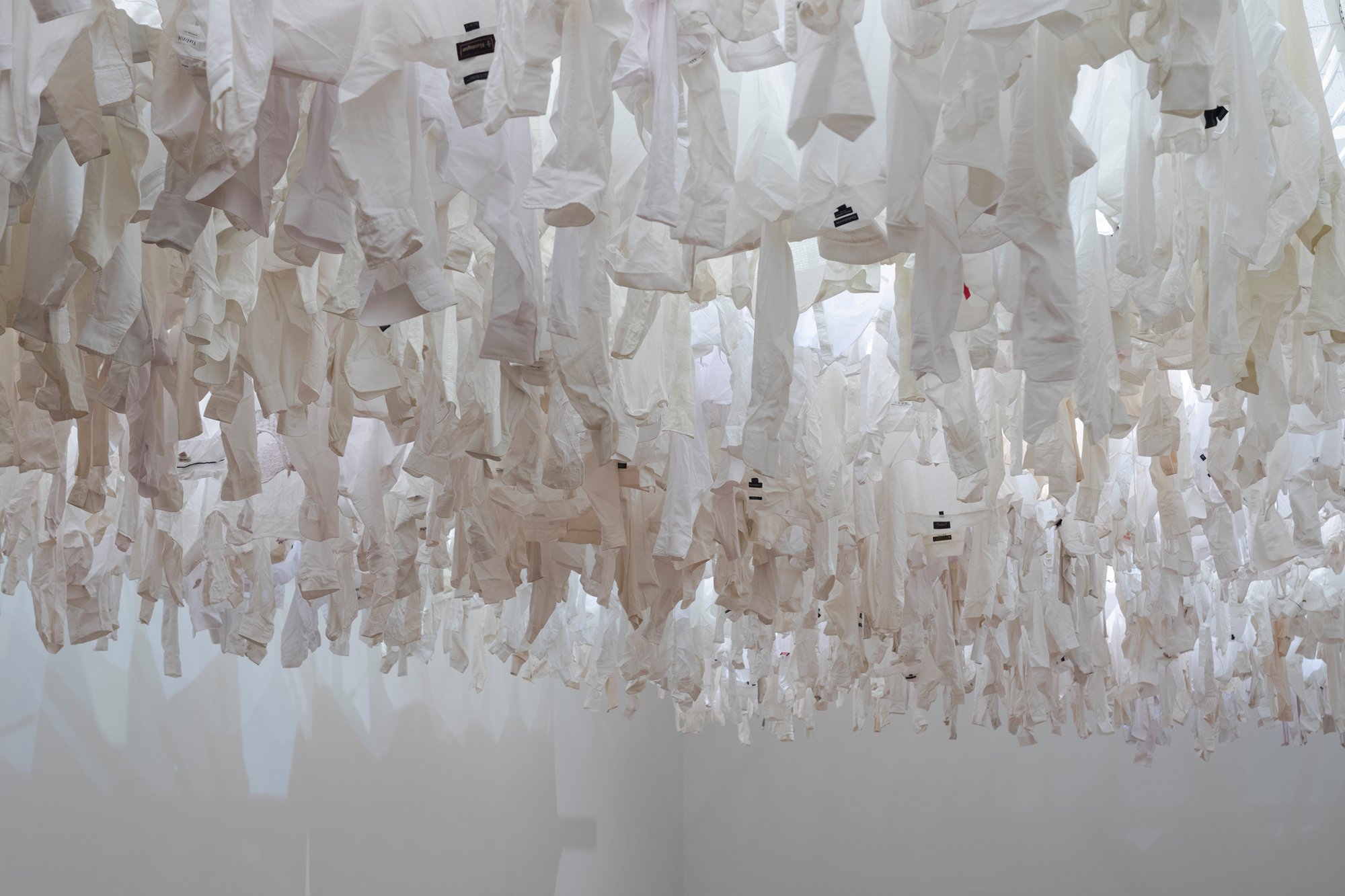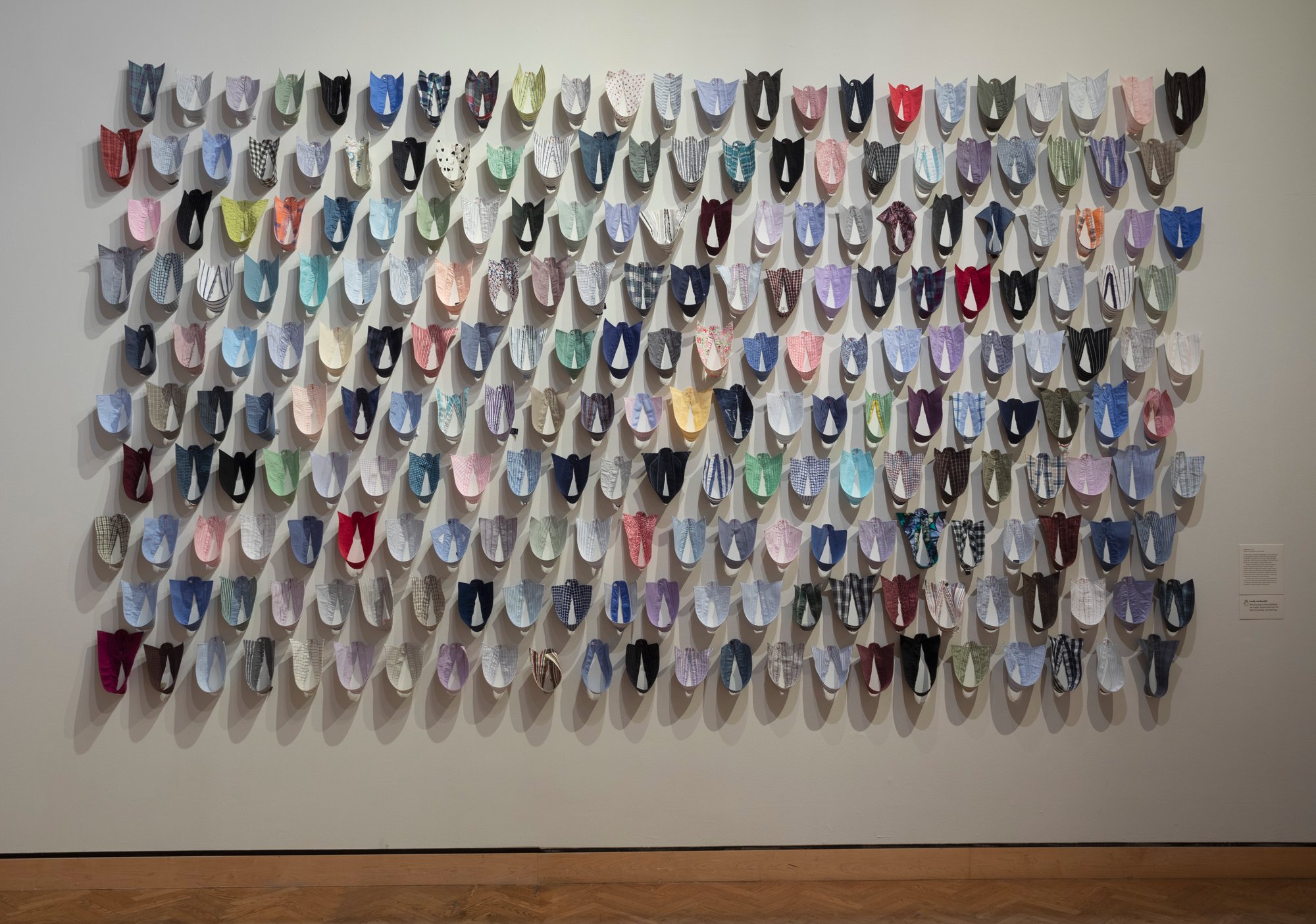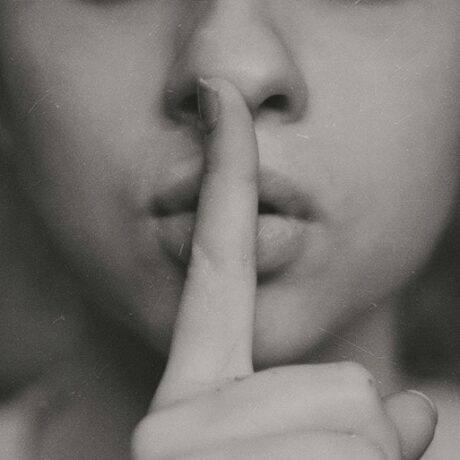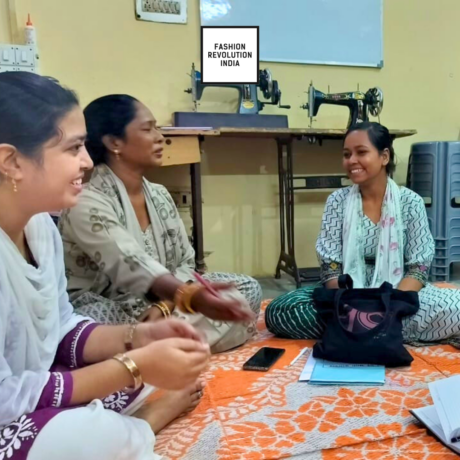The Labor We Wear: Engaging Students with the Stories Behind our Clothes
In part two of our series on Rachel Breen’s “The Labor We Wear,” our Fashion Revolution USA Director of Operations and Community Ashleyn Przedwiecki interviewed fashion student Hannah Meidl on their takeaways from the exhibit. This Q&A has been lightly edited for length and clarity.
ASHLEYN P.: Can you share a little bit more about yourself? What inspired you to pursue fashion merchandising? Where are you currently in your education?
HANNAH MEIDL: I am currently a junior at St. Catherine University. I am majoring in fashion merchandising with a minor in business administration. Fashion has always been a passion of mine. It has been an outlet for self-expression as a visible representation of myself. I have always used it to communicate freely and purposely as to how I set myself apart. People use unique ways to show self-expression: for me, I have always used fashion. I also have a great appreciation for the evolution of fashion. By looking at the trends during a certain time period, you can learn the dynamics of what was occurring. As I started pursuing fashion merchandising at St. Catherine University, I became aware of the industry’s lack of consideration for the environment and its laborers. Our sustainably focused program at St. Catherine’s fashion department has brought these concerns to my attention. By learning more about the industry and the dire need for change, I have become very interested in learning and participating in changing the industry. I hope to take my education and background on this subject to further pursue change.

A.P.: You saw the exhibition, The Labor We Wear, at the Minneapolis Institute of Art, last fall. Can you describe your experience? Any emotions, sensations, or other aspects you want to share?
H.M.: On October 30th, 2020, I was able to see “The Labor We Wear” exhibition and I became extremely interested in learning more about the project. When I first entered the exhibition, my breath was taken away. The project was elegantly simple but spoke volumes; it told the story of everyone that has been impacted by the industry. By using visual representations of statistical facts of the workers and others affected by the industry, I was able to actually wrap my head around their turnover rates. It was extremely emotional to see all the hard work that the workers produce in a day for only a small fraction of the price they deserve.
A.P.: What elements of the experience had the biggest impact on you? What did you learn or take away from the exhibition?
H.M.: While attending school, I have become very aware of the harsh relationship between the industry and the workers. This exhibition was able to dive deeper into the daily hardships the workers have to endure. By representing the workers’ daily labor load, I was able to fully grasp how hard they truly work without fair pay, unsafe working conditions, and lack of representation. By looking at the clothing articles, it gave me chills to think about the workers behind the pieces. We as consumers are wearing their work. A human being is behind every piece of clothing in your closet and before buying and disregarding it, we as human beings need to think about the consequences.

A.P.: What do you think the artist (Rachel) wanted you to know through her work?
H.M.: My takeaway from her work is the need for change. The clear message of the exploitation in the industry of labor and resources is being addressed for all to be aware of. It is very easy to ignore or not make it your problem, but we longer look away. We are part of the problem and it can not be solved until we look at our contribution, and factor in ways to solve it.
A.P.: How has the experience challenged or changed the way you view your career in fashion?
H.M.: This has once again confirmed my passion for the industry. Fashion will always have a strong influence on our world. I have been interested in ways that the industry can still flourish while working towards a more sustainable future. While taking classes at St. Catherine University and experiencing exhibits like such, I have only grown more interested in how I can contribute to a positive change within the industry.
A.P.: As a student of fashion, what do you hope for the industry as you enter into your career?
H.M.: My career goal is to help make the necessary changes to the industry. I always knew that I wanted to be in the fashion industry, but I never knew my exact passion within it. Amazing artists like Rachel Breen and education programs that have brought attention to the importance of sustainability and ethics have opened my eyes to the harsh realities of the industry. I want to turn my passion into a way to keep the beloved industry alive while reshaping it to fit the needs of workers and the environment. Trust me, I love nothing more than shopping, but we must ask ourselves at what cost. There are plenty of ways to continue that love for fashion without the workers’ lives and environment for sake, we just have to learn to make that our priority. Lessening consumption and shopping sustainably are great ways to start the change. Your love for fashion does not need to change but rather evolve for the better.
Hannah Meidl is a Fashion Merchandising student studying at St. Catherine University in Saint Paul, Minnesota. She was born and raised in Manitowoc, Wisconsin, where she developed a love for fashion as a form of self-expression. When she began college a passion and focus on sustainability emerged. Upon graduation, she is eager to begin her journey in the fashion industry and encourage change to better our world.








